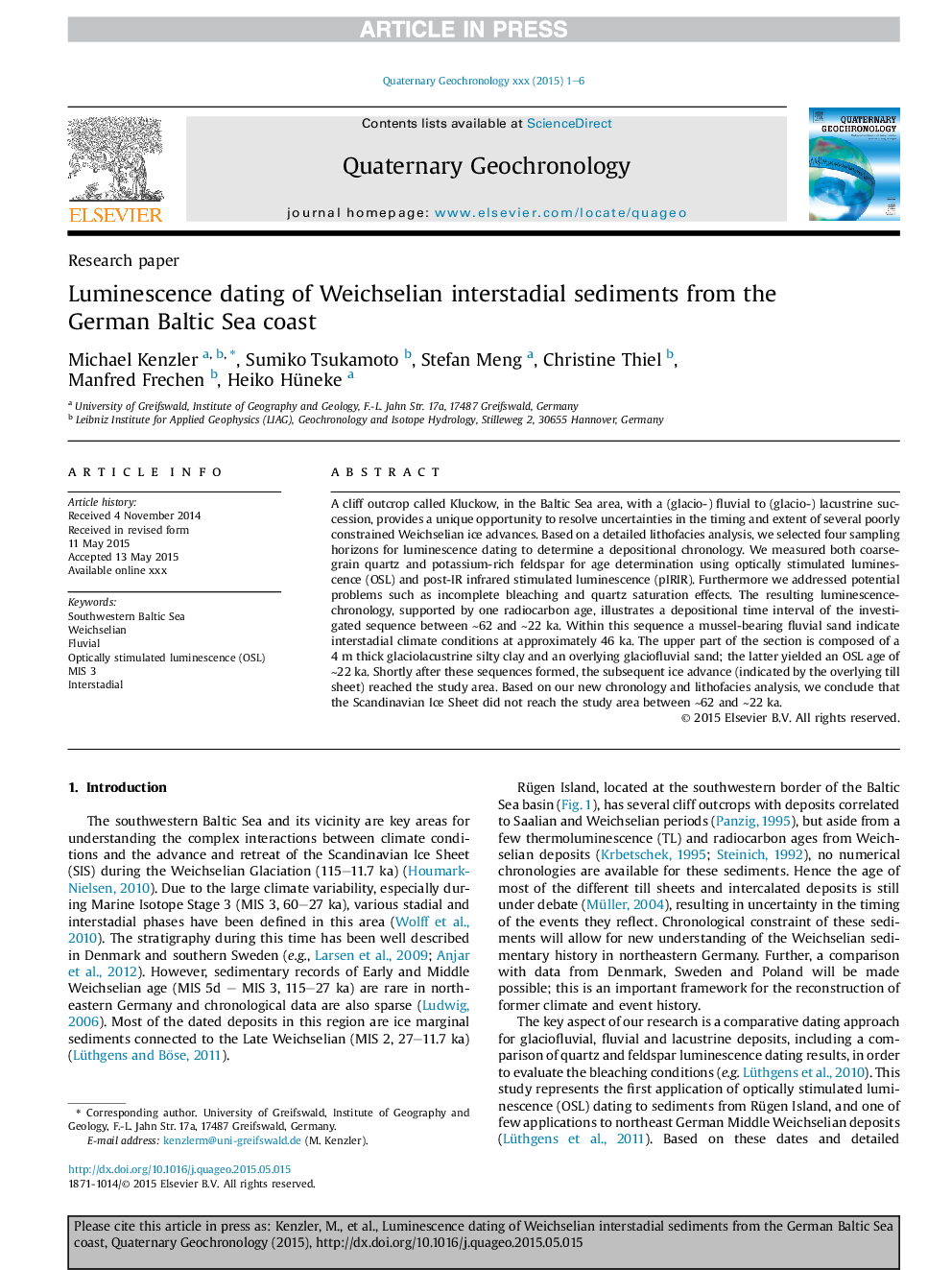| Article ID | Journal | Published Year | Pages | File Type |
|---|---|---|---|---|
| 6442554 | Quaternary Geochronology | 2015 | 6 Pages |
Abstract
A cliff outcrop called Kluckow, in the Baltic Sea area, with a (glacio-) fluvial to (glacio-) lacustrine succession, provides a unique opportunity to resolve uncertainties in the timing and extent of several poorly constrained Weichselian ice advances. Based on a detailed lithofacies analysis, we selected four sampling horizons for luminescence dating to determine a depositional chronology. We measured both coarse-grain quartz and potassium-rich feldspar for age determination using optically stimulated luminescence (OSL) and post-IR infrared stimulated luminescence (pIRIR). Furthermore we addressed potential problems such as incomplete bleaching and quartz saturation effects. The resulting luminescence-chronology, supported by one radiocarbon age, illustrates a depositional time interval of the investigated sequence between â¼62 and â¼22Â ka. Within this sequence a mussel-bearing fluvial sand indicate interstadial climate conditions at approximately 46Â ka. The upper part of the section is composed of a 4Â m thick glaciolacustrine silty clay and an overlying glaciofluvial sand; the latter yielded an OSL age of â¼22Â ka. Shortly after these sequences formed, the subsequent ice advance (indicated by the overlying till sheet) reached the study area. Based on our new chronology and lithofacies analysis, we conclude that the Scandinavian Ice Sheet did not reach the study area between â¼62 and â¼22Â ka.
Related Topics
Physical Sciences and Engineering
Earth and Planetary Sciences
Geochemistry and Petrology
Authors
Michael Kenzler, Sumiko Tsukamoto, Stefan Meng, Christine Thiel, Manfred Frechen, Heiko Hüneke,
